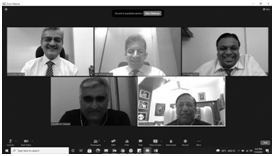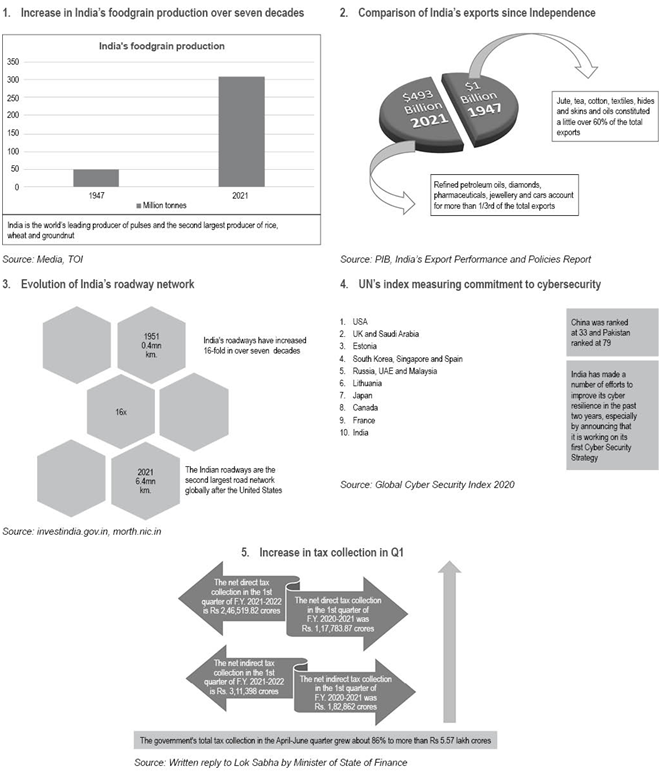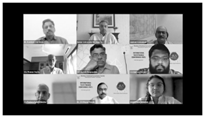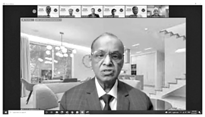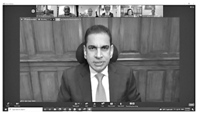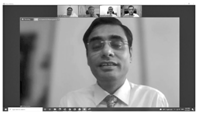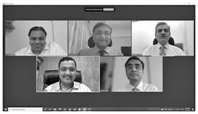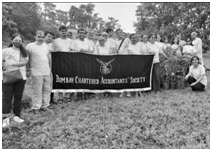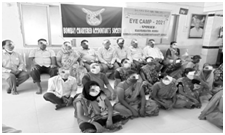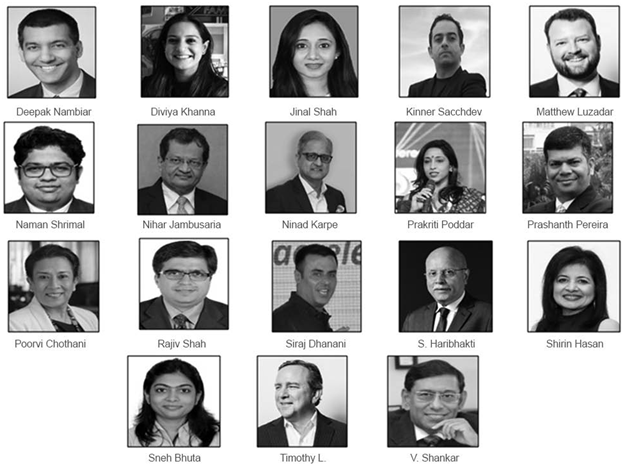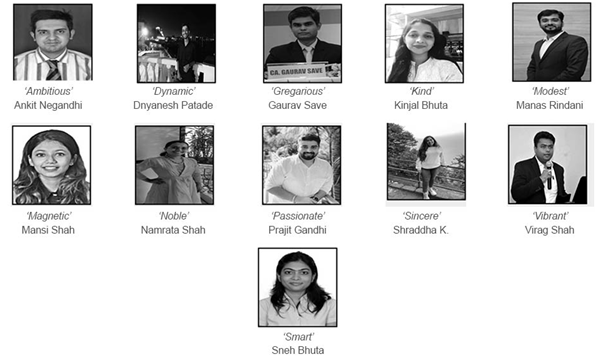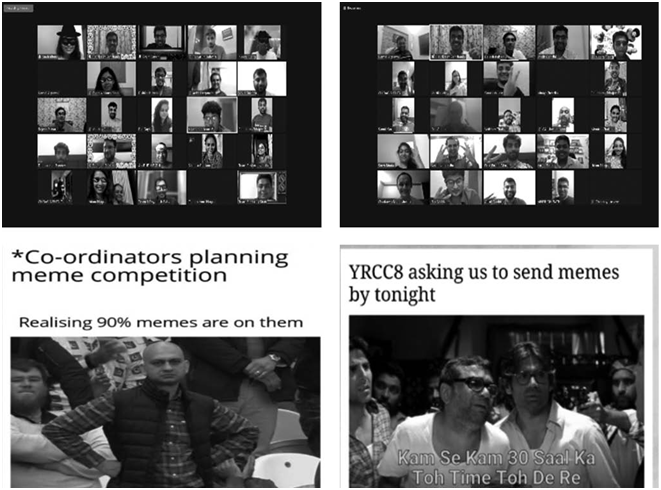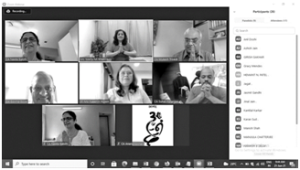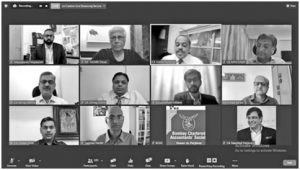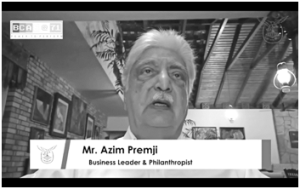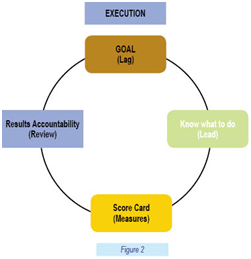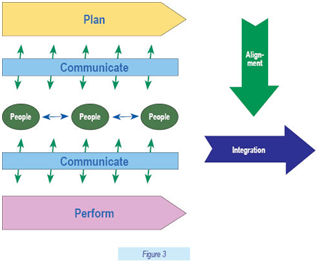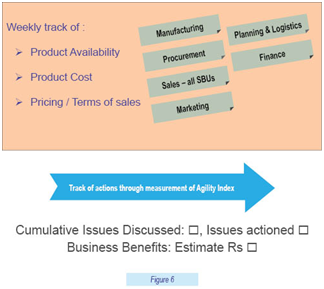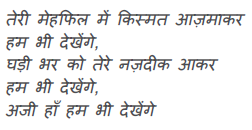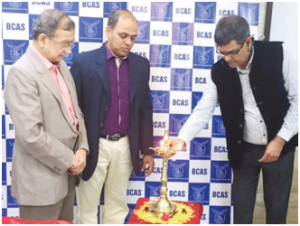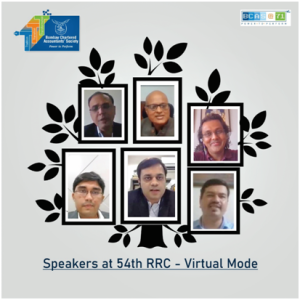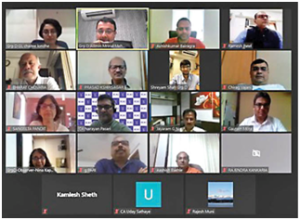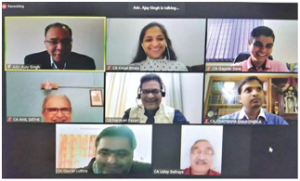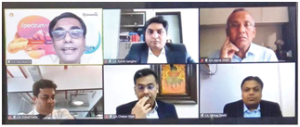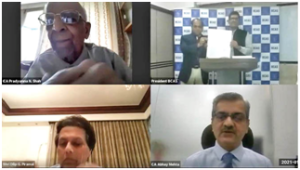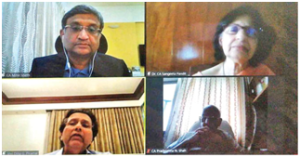Changes in Rules – Notification No. 35/2021-Central Tax dated 24th September, 2021:
Certain changes made in the CGST Rules through the above Notification may be noted as follows:
i) Rule 10A: Rule 10A is about furnishing of bank account details. In addition to details already prescribed, the following further requirements are now prescribed:
• The bank account should be in the name of the registered person and should be based on the PAN of such person.
• In case of a proprietary concern, the PAN of the proprietor should be linked with the Aadhaar number of the proprietor.
ii) Rule 10B: Rule 10B is newly inserted. Authentication of Aadhaar is now necessary for registered persons in order to be eligible for the following functions:
• For filing application for revocation of cancellation of registration in Form GST-REG-21 under Rule 23;
• For filing refund application in Form RFD-01 under Rule 89;
• For refund under Rule 96 of the IGST paid on goods exported out of India; further, in the Rule it is mentioned that if an Aadhaar number has not been assigned to the registered person, then such person may furnish the following identification documents:
• Aadhaar Enrolment ID slip; and
• Bank passbook with photograph, or
• Voter identity card issued by the Election Commission of India; or
• Passport; or
• Driving License issued by the Licensing Authority under the Motor Vehicles Act, 1988 (59 of 1988).
In the above cases, such person must authenticate the number within 30 days of allotment of the Aadhaar number. The above changes in Rule 10A and 10B will come in force from a notified date.
iii) Rule 23(1): This Rule is regarding revocation application. In pursuance of the insertion of Rule 10B, this Rule is amended for giving reference to Rule 10B. The effect is that the application can be filed only by the authenticated person.
iv) Rule 45(3): Rule 45 is regarding conditions about ITC in relation to goods sent to a job worker. There is also a requirement of filing GST-ITC-04 giving details about goods dispatched to the job worker or received from the job worker. Before amendment such details were to be given on quarterly basis. Now, by the amendment, the quarter is replaced by specified period which is defined as below:
‘Explanation. – For the purposes of this sub-rule, the expression “specified period” shall mean – (a) the period of six consecutive months commencing on the 1st day of April and the 1st day of October in respect of a principal whose aggregate turnover during the immediately preceding financial year exceeds five crore rupees; and (b) a financial year in any other case’;
Thus, periodicity of filing Form GST-ITC-04 will now be half-yearly or yearly, based on aggregate turnover.
The above change is effective from 1st October, 2021.
v) Rule 59(6): Rule 59 is regarding filing of GSTR1. As per Rule 59(6)(b), if return in Form GSTR3B for two consecutive months were not filed, then filing of GSTR1 is prohibited. Now, by the present amendment, the period of two months is replaced by preceding month. In other words, unless return in Form GSTR3B for the preceding month is filed, GSTR1 will not be allowed to be filed for the next month. Similarly, such amendment is made in relation to quarterly return in Form GSTR3B. This amendment is applicable from 1st January, 2022.
In Rule 59(6) clause (c) is deleted since the position sought to be covered by the said clause is covered by the above amendment in Rule 59(6)(b).
vi) Rule 89: a) Rule 89(1) is regarding filing of refund application. In pursuance of newly-added Rule 10B, it is now provided that the application is to be signed by an Aadhaar authenticated person.
b) Rule 89(1A) is newly added. This Rule provides the procedure regarding filing of refund application where the tax on interstate supply is paid and refund of tax paid earlier as intra-state supply is to be claimed as refund. This Rule provides that the application for such refund should be filed in Form GST-RFD-01 before the expiry of two years from the date of payment of the tax on the interstate supply.
vii) Rule 96: a) Rule 96(1) is about filing refund application of IGST in relation to export. In pursuance of newly-added Rule 10B, by amendment in this rule it is provided that the application is to be signed by the Aadhaar authenticated person.
viii) Rule 96C is newly inserted. It is regarding credit of refund in bank account. In pursuance of the amendment in Rule 10A, by amendment in this rule it is provided that the bank account should be one which fulfils the conditions mentioned in Rule 10A.
II. EXCLUSION FROM AUTHENTICATION PROCEDURE – NOTIFICATION NO. 36/2021-CENTRAL TAX DATED 24TH SEPTEMBER, 2021
Under section 25(6D), the list of persons to whom authentication will not apply is notified vide Notification 3/2021 dated 23rd February, 2021. The said Notification is amended to bring reference of section 25(6A) in the said Notification. The effect is that the requirement of Aadhaar authentication will not apply to the persons covered by the
Notification.
|
Sl. |
Notification No. |
Reference of Entry in which change is made |
Indicative changes (changes are |
|
1. |
06/2021-Central Tax (Rate) dated 30th September, 2021 |
Changes in Notification No. a) Entry 3(iv)(g) |
In addition to benefit of this Entry available to an entity |
|
b) Entry 3(iv)(g) |
This Entry was relating to rate of tax on Intellectual Property |
||
|
c) Entry 17(ii) |
Now, the Entry is replaced to incorporate |
||
|
d) Item (ica) is added in Entry 26 |
Category of ‘services by way of job In item (id), amendment is made to add (ica). Similarly, |
||
|
e) Item (i) and (ii) in Entry 27 |
The Entry relating to services by way of printing is omitted and |
||
|
1. |
|
f) Items (iii) and (iiia) in Entry 34 are substituted |
By substitution, the service by way of |
|
g) Entry 38 is amended |
By change in Explanation given in the |
||
|
h) In Annexures: scheme of classification of service, Entries |
By addition of Entry 118a, multi-modal transport of goods is By insertion of Entry 118b, further classification is made under |
||
|
2. |
07/2021-Central Tax (Rate) dated 30th September, 2021 Changes in exemption Entries |
Changes
a) |
The exemption applicable to entity registered u/s 12AA of |
|
b) Entry 9AA is amended |
The application of Entry to FIFA is kept open and it will apply |
||
|
c) Entry 9AB is inserted |
Nil rate provided to services provided by and to Asian Football |
||
|
d) Entry 9D and 13 are amended |
The benefit of Entry is extended to entity registered u/s 12AB |
||
|
e) Entries 19A and 19B are amended |
Benefit is extended till 30th September, 2022. |
||
|
f) Entry 43 is omitted |
The Entry was relating to leasing of assets by IRFC to Indian |
||
|
g) Entry 61A is inserted |
By this Entry, Nil rate is provided for services by way of granting |
||
|
h) Entry 72 is amended |
This Entry gives exemption for given |
||
|
i) Entry 74A and 80 are amended |
The benefit of Entry is extended to entity registered u/s 12AB |
||
|
j) Entry 82B is inserted |
Exemption is provided to services by way of right to admission |
||
|
3. |
08/2021-Central Tax (Rate) dated 30th September, 2021 |
a) Entries 138 to 148, 187A, 234, under Schedule I and Entries |
|
|
3. |
|
Changes in Schedule-I (2.5%) |
|
|
b) Entry 71A is inserted |
Separate Entry is provided for tamarind seeds meant for any use |
||
|
c) Entry 186A is inserted |
Entry provided for biodiesel supply to specified company. |
||
|
d) Entry 232 is inserted |
New entry for Pembrolizumab (Keytruda) is provided. |
||
|
e) In List 3, Entry B(3) is inserted |
Entry provided for retro fitment kits for vehicles used by |
||
|
Schedule-II (6%) |
|
||
|
f) Entry 80A is substituted |
Biodiesel (other than biodiesel supplied to specified company) |
||
|
g) Entry 201A is inserted |
Specified renewable energy devices and parts for the manufacture |
||
|
Schedule-III (9%) |
|
||
|
h) Entries 26C to 26L inserted |
These new Entries cover ores of various metals like iron, |
||
|
i) Entry 101A is inserted |
Separate Entry for waste, parings and scrap of plastic is |
||
|
j) Entry 153A is inserted |
Various packing items like cartons, etc., covered by Customs heading |
||
|
k) Entry 157A is inserted |
Various items of plans and drawings for architectural work, |
||
|
l) Entry 157B is inserted |
Unused postage, revenue or similar stamps covered by heading |
||
|
m) Entry 157C is inserted |
Transfers covered by heading 4908 are included in this Entry. |
||
|
n) Entry 157D is inserted |
Printed or illustrated postcards, etc., covered by heading 4909 |
||
|
o) Entry 157E is inserted |
Calendars of any kind covered by heading 4910 are included. |
||
|
p) Entry 157F is inserted |
Other printed matters covered by heading 4911 are included in |
||
|
q) Entries 398 A to 398H are inserted |
Various items related to rail locomotives, railways or tramways |
||
|
3. |
|
r) Entry 447 is substituted |
The scope of the Entry is widened to include various other |
|
Schedule- IV (14%) |
|
||
|
s) |
New Entry covering carbonated beverages of fruit drinks or |
||
|
4. |
09/2021-Central Tax (Rate) dated 30th September, 2021 |
a) |
The Explanation is added to restrict the scope of Entry and to |
|
5. |
10/2021-Central Tax (Rate) dated 30th September, 2021 |
a) |
This Notification is related to RCM. Entry 3A is inserted to |
|
6. |
11/2021-Central Tax (Rate) dated 30th September, 2021 |
a) |
This Notification is related to rate of |
|
7. |
12/2021-Central Tax (Rate) dated 30th September, 2021 |
a) Newly inserted |
This Notification is to provide exemption or concessional rate |
|
8. |
01/2021-Compensation |
a) Entry 4B newly inserted |
Rate of 12% provided on the item carbonated beverages of food |
CIRCULARS
1. Clarification on doubts related to scope of ‘Intermediary’; Circular No. 159/15/2021-GST dated 20th September, 2021:
The CBIC has issued the above Circular to clarify certain doubts related to the scope of ‘Intermediary’ services.
The CBIC has clarified the scope of intermediary services and primary requirements for intermediary services. It is clarified that for intermediary service to take place there should be three parties, two principals and the third who can be the intermediary. Within two parties no intermediary service can take place.
Further, if the supplies are on one’s own account, intermediary service cannot take place. Sub-contractor service, as principal to principal, also cannot be intermediary.
The CBIC has given illustrations as to how and when intermediary service takes place in different situations.
The Circular will be useful for guidance.
2. Clarification in respect of certain GST-related issues; Circular No. 160/16/2021-GST dated 20th September, 2021 r.w. Corrigendum No. 20001/8/2021-GST dated 24th September, 2021:
The CBIC has issued the above Circular to clarify certain GST-related issues. The clarifications given are as under:
* For the purpose of section 16(4), the year related to ITC in respect of debit note is delinked from the year of invoice. In other words, it is clarified that invoice and debit notes will be considered separately and the ITC claim can be taken as per the date of the respective documents. This is a beneficial clarification.
* Carrying copy of invoice during movement of goods: It is clarified that in case of E-invoice there is no need of carrying physical copy and invoice in electronic form will be sufficient compliance.
* Export of goods having Nil rate of export duty – In relation to prohibition of refund u/s 54(3), it is clarified that if there is actual levy of export duty then prohibition will apply. If there is no levy of export duty, being Nil or exempt from duty, the prohibition will not apply.
3. Clarification relating to export of services condition (v) of section 2(6) of the IGST Act, 2017; Circular No. 161/17/2021-GST dated 20th September, 2021:
By this Circular the CBIC has clarified certain issues relating to condition (v) of section 2(6) of the IGST Act which is relating to export of services.
The condition (v) in section 2(6) provides as under:
‘(6) “export of services” means the supply of any service when –
(i) the supplier of service is located in India;
(ii) the recipient of service is located outside India;
(iii) the place of supply of service is outside India;
(iv) the payment for such service has been received by the supplier of service in convertible foreign exchange; and
(v) the supplier of service and the recipient of service are not merely establishments of a distinct person in accordance with Explanation 1 in section 8;’
It is clarified that if the two offices involved in the transaction belong to same entity then the above condition (v) will be applicable. However, if the entities are separate, such as one company registered outside India and one registered in India, although in the same group, they will be separate entities and not hit by the above clause (v).
4. Clarification in relation to refund of tax specified in section 77(1) of the CGST Act and section 19(1) of the IGST Act; Circular No. 162/18/2021-GST dated 25th September, 2021:
The CBIC has issued the above Circular in which the newly-inserted Rule 89(1A) and claiming of refund is explained with examples;
This Circular will be useful in a given situation where intra-state tax was already paid and subsequently interstate tax is actually paid, or vice versa.
5. Clarification in relation to GST rates and Classification; Circular No. 163/19/2021-GST dated 6th October, 2021:
The CBIC has issued the above Circular to explain the changes made in Entries in light of decisions taken in the 45th Council Meeting. The changes are effected by the Notifications referred above and explained in this Circular along with the background for changes.
6. Clarification in relation to applicable GST rates and exemption on certain Services; Circular No. 164/20/2021-GST dated 6th October, 2021:
Similar to the above Circular 163/19/2021, this Circular is issued to clarify the amendment made to entries
relating to services in light of decisions taken in the 45th Council Meeting. The changes are explained with the background.
INSTRUCTIONS
Instruction No. 2 – 2020-2021 dated 22nd September, 2021 has been issued. By this Instruction, the Department is reminded of time limits for initiating action under sections 73 and 74 of the CGST Act and further instruction to tax and to take timely action.
ADVANCE RULING
Composite Supply
M/s SHV Energy Pvt. Ltd. [Order No. A.R. Com/27/2018; dated 6th August, 2021 and TSAAR Order No. 06/2021] (Telangana)
The applicant applied for determination of the nature of his transaction. The facts are that the applicant is a supplier of LPG to domestic and industrial users. In the application it is submitted that it enters into an LPG supply agreement with industrial users for longer periods ranging from five to ten years. They have to set up a structure called manifold at the premises of the recipient for supply of LPG. This manifold consists of LPG cylinders, regulators, primary piping, pressure regulator systems, etc. The ownership of the structure lies with the applicant. The purchaser pays rental charges at the rate of Rs. 5,000 per month for this structure.
Further, since setting up of this system involves substantial investment, the customer is obliged to purchase LPG exclusively from the applicant and the conditions of the agreement specify the minimum quantity to be lifted from SHV. In the event of the purchaser not lifting the minimum quantity, such purchaser has to pay commitment charges at the rate of Rs. 2,900 per metric ton of such shortfall in quantity, called as ‘take or pay’ charges.
Based on the facts mentioned above, the applicant sought Advance Ruling on the following issues:
a. Whether the impugned supply can be regarded as ‘composite supply’ and whether the rate of tax of the principal supply could be adopted for the whole of the supplies?
b. The applicant sought determination in respect of the following specific questions:
i. Whether sale of LPG, collection of ‘take or pay’ charges for not lifting minimum assured quantity and rental charges for supplier gas system installed at the customer premises to store the LPG, which is a condition precedent for supply of LPG, be treated as composite supply u/s 2(30) of the GST Act, 2017?
ii. Whether supply / sale of LPG be treated as principal supply for the above-mentioned transaction?
In the course of the hearing, the above issues were reiterated. Judgments / orders were relied upon to support the issue that it is composite supply.
The AAR referred to the definition of ‘composite supply’ in section 2(30) which is reproduced as under:
‘“Composite supply” means a supply made by a taxable person to a recipient consisting of two or more taxable supplies of goods or services or both, or any combination thereof, which are naturally bundled and supplied in conjunction with each other in the ordinary course of business, one of which is a principal supply.
Illustration: Where goods are packed and transported with insurance, the supply of goods, packing materials, transport and insurance is a composite supply and supply of goods is a principal supply.
The AAR also referred to the judgment of the Supreme Court in the case of Abbott Health Care Pvt. Ltd. (2020) 74 GSTR 37 (Kerala) – 2020-VIL-08-Ker, in which it is held that a composite supply must take into account supplies as effected at a given point in time on ‘as is where is’ basis.
He also referred to the guidelines about naturally bundled supply (as in Education Guide on Taxation of Services published by CBE & Con 20th June, 2012 at para 9.2.4) mentioned as under:
a. There is a single price or the customer pays the same amount, no matter how much of the package they actually receive or use.
b. The elements are normally advertised as a package.
c. The different elements are not available separately.
d. The different elements are integral to one overall supply – if one or more is removed, the nature of supply would be affected.
The AAR observed that as per the illustration given in the definitions, the supply of service, i.e., insurance and goods, go alongside each other. Therefore, a composite supply should be similar to a supply mentioned in the illustration to the definition in section 2(30), where two or more taxable goods or services are supplied along with each other to constitute a composite supply.
Based on the above background, the AAR observed that ‘take or pay’ charges are evidently compensation for breach of contract and a penalty stipulated to be paid to the applicant by his buyer for not purchasing the minimum quantity specified in the agreement. He therefore held that these charges come into existence only when there is no supply of LPG, meaning thereby that the supply of LPG and ‘take or pay’ charges are mutually exclusive and can never exist together. It observed that forbearance comes into existence only upon breach and hence the requirements of a composite contract as mentioned above are not fulfilled.
Accordingly, rejecting the contention of the applicant, the Learned AAR passed the following order:
|
Question raised |
Advance ruling issued |
|
1. Whether sale of LPG, collection of ‘take or pay’ charges for |
1. Sale of LPG, collection of ‘take or pay’ charges for not |
|
2. Whether supply / sale of LPG be treated as principal supply |
Does not arise in view of the above |













